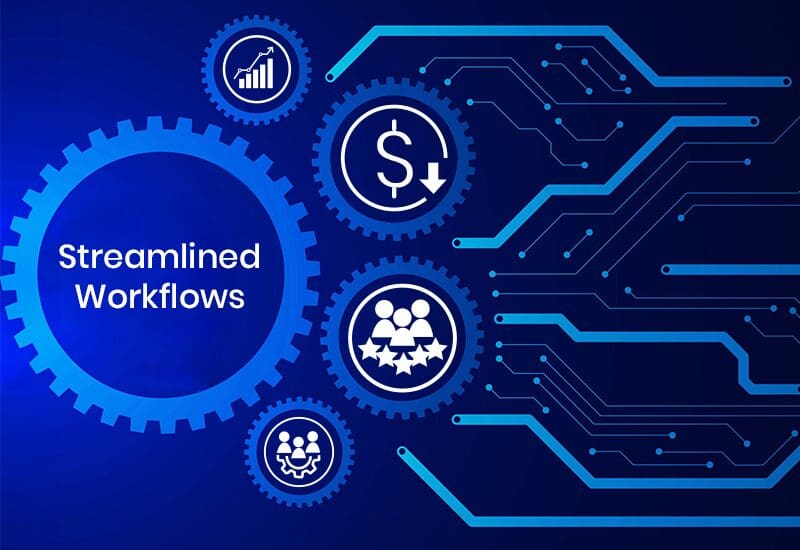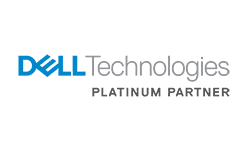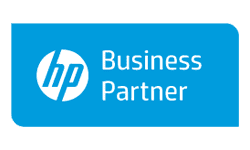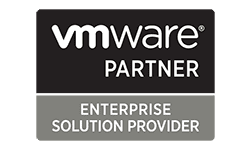Streamlining Business Processes and Workflows: A 12-Step Guide
Improve business operations and fine-tune tasks to ensure your business functions efficiently.
Kelsey Young, Copywriter and Media Specialist
5 Min Read

Streamlining business processes and workflows is a systematic approach that focuses on analyzing, redesigning, and optimizing the array of activities and tasks within an organization. The primary goal is to enhance efficiency, leading to more desirable results across various facets of operations.
At its core, streamlining seeks to eliminate redundancies. This often means discerning and removing repetitive or non-value-added steps in a process. By doing so, not only is process time reduced, allowing tasks to be completed more swiftly, but there’s also a notable decrease in the potential for mistakes.
A significant benefit of efficient processes is the increased flexibility. In a dynamic business environment where market demands and technological advancements are always evolving, streamlined workflows can more readily adapt. This adaptability ensures that businesses can swiftly introduce new products, services, or incorporate novel technologies.
An efficient and well-organized workflow typically culminates in a better end product or service. This invariably has a ripple effect, leading to enhanced customer satisfaction and loyalty.
On the internal side, streamlined processes are often associated with clarity. When processes are well-defined and documented, employees gain a better understanding of their roles, boosting morale, fostering collaboration, and reducing the learning curve for new team members.
Furthermore, streamlined processes often lead to tangible cost savings. By cutting down on inefficiencies, organizations can make significant savings, be it through reduced labor hours, minimized wastage of resources, or a decrease in costs associated with errors. As businesses expand, processes that may have once been efficient can become unwieldy.
All this to say, it’s essential that streamlined processes are designed to scale, supporting the growth trajectory of the business. Streamlining is a continuous improvement strategy that serves to keep businesses agile, making them more competitive and responsive to the ever-changing nuances of the market or industry they operate within.
In the dynamic world of business, streamlining is essential to ensure your organization is operating as effectively as possible. Here is a twelve-step guide to evaluating map to reviewing your business’s processes and workflows.
12 Steps to Streamline Processes and Workflows

Map Out Your Current Processes
Start by documenting all your current business processes. This visual representation will help you understand the flow and identify bottlenecks.

Identify Redundancies
Review your processes to identify and eliminate redundant steps. Doing so can save both time and resources.

Prioritize Processes for Improvement
Not all processes are equally important. Rank them based on factors such as frequency, customer impact, and cost implications.

Set Clear Objectives
Know what you want to achieve with the streamlining. Whether it’s speeding up processing time, reducing errors, or improving customer service, having a clear objective will guide your efforts.

Empower Your Teams
Involve your team in the process. They’re often best placed to offer insights into inefficiencies and suggest improvements.

Embrace Automation
Automating repetitive and manual tasks can significantly enhance efficiency. Look for areas where automation can be applied.

Monitor and Measure
Use Business Process Management (BPM) tools to track the performance of your processes, ensuring they’re delivering the desired outcomes.

Regularly Review
Business needs evolve, so should your processes. Schedule regular reviews to make necessary adjustments.

Train Your Staff
Ensure that everyone understands the new processes and workflows. Training ensures consistency and adoption.

Maintain Open Communication
Encourage feedback and maintain open lines of communication. It can lead to continuous improvement.

Implement Robust Data Management
Accurate data is the backbone of efficient processes. Ensure your data is clean, up-to-date, and easily accessible.

Stay Updated with Industry Best Practices
Industries evolve, and so do best practices. Stay updated to ensure that your processes are in line with the latest industry standards.
Harnessing the Power of Microsoft Power Platform
To truly optimize business workflows and processes, using the right technological solutions is essential. This is where GDC IT Solutions (GDC) and Microsoft Power Platform come into play.
Microsoft Power Platform is a suite of tools that allows users to build custom business solutions without extensive coding. GDC’s article, What is Microsoft Power Platform and Does It Benefit My Business?, goes into more detail about Microsoft Power Platform and its four main components, Power Apps, Power BI, Power Automate, and Power Virtual Agents.
But Microsoft Power Platform is an effective tool for businesses to streamline their workflows. The platform integrates seamlessly with other Microsoft products and various third-party apps, ensuring that businesses can optimize their processes without any hitches. The following are a few of the ways Microsoft Power Platform can help:
Unified View: The Power Platform provides a centralized space where businesses can view and manage their data, apps, and processes.
Power Automate: Use this tool to create automated workflows between apps and services. Automating repetitive tasks can save time and reduce errors.
Power BI: With its robust analytics capabilities, businesses can get insights into their processes, helping in making informed decisions. Learn more about the power of business intelligence here.
Custom Apps with Power Apps: Without the need for deep coding knowledge, businesses can develop apps tailored to their unique needs, streamlining various processes.
Streamlining business processes and workflows is not just about eliminating redundant steps. It’s about creating a fluid, efficient, and responsive system that can adapt to changing business landscapes. With tools like the Microsoft Power Platform, businesses are better equipped to create an agile and efficient operational environment.
Interested in streamlining processes and workflows for your business? Contact GDC to learn more.




